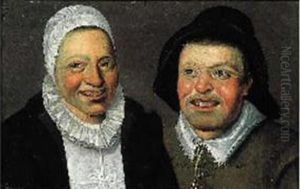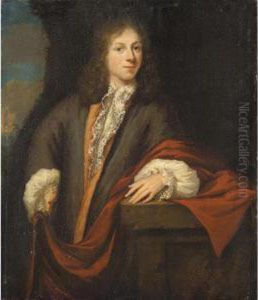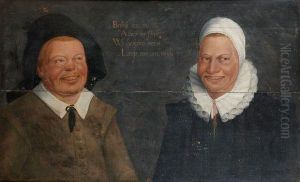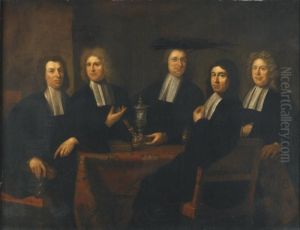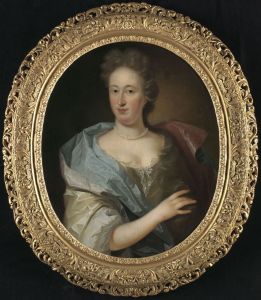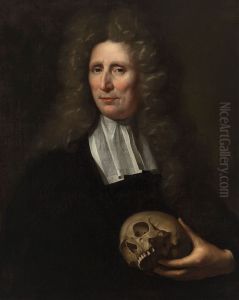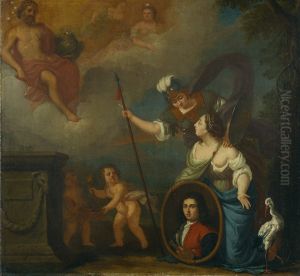Juriaen Pool Paintings
Juriaen Pool, born in 1666, was a Dutch Golden Age painter whose life and work contributed to the rich tapestry of 17th and 18th-century Dutch art. Although not as widely recognized as some of his contemporaries, Pool's contributions to the art world during this period were significant, particularly in the realm of portrait painting. He was an adept painter, known for his detailed and expressive portraits that captured the essence of his subjects with a remarkable degree of realism and sensitivity.
Juriaen Pool's early life is not well-documented, but it is known that he was active in Amsterdam and later in The Hague, two of the most vibrant artistic centers in the Netherlands during that time. In Amsterdam, he would have been exposed to the bustling world of art commerce, interacting with art dealers, fellow artists, and patrons, which would have influenced his artistic development and career.
In 1690, Juriaen Pool married the well-known and talented still life painter Rachel Ruysch. This partnership was not only a personal but also a professional union, as both artists were deeply involved in the art world. Rachel Ruysch was a highly respected artist in her own right, and her success and reputation likely had a positive impact on Pool's career. The couple had ten children, several of whom were also involved in the arts, creating a true family of artists. Their marriage is an interesting aspect of Pool's life, showcasing the intertwining of personal and professional realms within the art community of the period.
Throughout his career, Pool received various commissions for portraits from the Dutch elite, which helped to cement his reputation as a skilled portraitist. His works are characterized by a keen attention to detail, a deep understanding of human anatomy, and the ability to capture the personality and inner life of his subjects. He was also known to collaborate with other artists, including his wife, on occasion, blending their talents to create works that combined Pool's portraiture with Ruysch's exquisite floral arrangements.
Juriaen Pool's death in 1745 marked the end of a career that spanned over five decades, during which he contributed to the legacy of Dutch painting. His works remain a testament to the skill and creativity of artists during the Dutch Golden Age, embodying the period's interest in realism, detailed observation, and the portrayal of individual character. Although not as celebrated as some of his peers, Pool's art continues to be appreciated by connoisseurs and historians for its beauty and craftsmanship.
